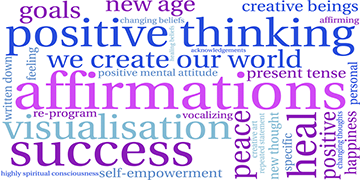Practise Self Hypnosis
How To Practise Self Hypnosis
Practise self hypnosis: Are you ready to help yourself?

Modern living generally prescribes that if you have a health issue then you should visit a doctor. Similarly, if you are going through a period of stress or anxiety, then you need to see a therapist. These professionals will suggest the best medication and therapeutic solution to your problems.
There is a general misconception however that in order to get well and tackle your problems properly, you have to receive help from someone else, someone who is professionally qualified to deal with your issues. Seeking assistance from a professional gives you the feeling that you getting something that is more beneficial than if you took some remedial steps yourself.
In certain circumstances seeking professional help is a sensible solution, but for most of the population, it is simply unnecessary to spend huge amounts on therapy sessions or on prescribed medication. In many cases you can heal your own symptoms without receiving help from anyone else. All you need is determination, and a bit of self discipline (yes, you already have that!) The rest will follow naturally as you experience the benefits from your input.
This article will offer you some of the ways that you can become your own therapist. All you have to do is to learn to practise self-hypnosis.
What is self hypnosis?
Self hypnosis can be defined as a self-initiated process to deliberately induce a state of concentrated, heightened suggestibility. The process can initially involve changes in your breathing and postural tension to enable a deeper feeling of relaxation. You can then employ suggestions (affirmations), your imagination and visualisation techniques to access a future desirable state (your goal). You may also practise self hypnosis to alter the meaning of past experiences.
Practise self hypnosis: Common misconceptions

Some of the common misconceptions about your ability to practise self hypnosis usually relate to the general misconceptions about externally guided hypnosis (i.e. when the hypnotic induction is being externally guided by another person such as a hypnotist or hypnotherapist).
These misconceptions of hypnosis tend to be portrayed in the media and convince the audience that:
- You will not wake up from a hypnotic trance: Everyone “wakes up” from a hypnotic trance. Self hypnosis is a natural, relaxed state; if you do fall asleep, you will wake up when you are ready.
- You will lose control of your mind and reality: The “power” of hypnosis is in the subject not the person doing the hypnosis. In the case of self hypnosis you are guiding your own thoughts. You are controlling the whole experience.
- You will weaken your mind and become more suggestible to adverts after hypnosis: There is no evidence that hypnosis makes you more susceptible to general advertising. With self hypnosis, you decide which suggestions that you want to follow.
In the practise of self hypnosis, you are inducing your own hypnotic state and can decide when to exit your hypnosis. During your hypnosis you will be aware of and in control of your actions. You are choosing your suggestions and thus choose the direction of your goal.
Practise self hypnosis: What can it treat?
Self hypnosis can be used to change your thinking patterns, emotions and behaviour in a variety of issues. You can practise self hypnosis to deal with everyday problems such as the inability to relax, releasing stress, poor concentration, prioritising, general problem-solving, confidence rehearsal to master skills, and reducing emotions like anger.
You can also practise self hypnosis to achieve medium to long-term goals. These can include dealing with low self esteem, anxiety, depression, breaking bad habits, addictions such as managing craving when stopping smoking, chronic pain, performance anxiety, sports performance, sleep problems and changing negative eating patterns.
Approaching self hypnosis
A common ambition when you first practise self hypnosis is to try and fix deeper long term problems in one session. The bigger problems take dedication and persistence to resolve and a thorough understanding of your core values. Self hypnosis is not a wand waving exercise! Instead, aim to be realistic about your goal. Practise in small steps, achieving small goals rather than miracle cures. First focus your practises on altering day to day issues where you can observe a measurable change. This could be rehearsing some points that you want to present at a meeting, visualising confidence in an upcoming awkward social interaction or problem-solving a hectic schedule to ensure it runs smoothly the following day.
By setting small goals in the early stages, you can learn to appreciate your heightened state of awareness that accompanies self hypnosis. This will involve just developing breathing techniques and lowering levels of physical tension. When you can achieve this state, you can then use it for rehearsing something that might be causing you a low level of anxiety or stress e.g. planning what to take on an important trip. It’s incredible what the subconscious mind will present to you in self hypnosis when you have taken a step back from a taxing situation ahead. You can then add these ideas gained from your self hypnosis into your active note list.
Creating suggestions

The next stage involves using hypnotic suggestions to direct your mind towards your goal. Suggestions can be similar to affirmations, but when used is a hypnotic state, the affirmation can bypass the conscious mind without interference. The affirmation then becomes a suggestion that can be more readily accepted by the unconscious mind.
Previously, if you have tried consciously repeating affirmations and found little benefit from the process, the hypnotic state can be what gives the affirmation the “power” to transform it into a “believable” belief.
You can use hypnotic suggestions for a whole variety of short-term and long-term goals. You may want to conquer public speaking, build confidence in certain situations like driving or sports performance, build your self esteem, or break a habit like smoking, nail biting or overeating.
When creating suggestions, there are certain “mind” rules that your unconscious mind will accept. These are commonly taught in hypnosis and hypnotherapy courses. These “mind” rules will help focus you towards your goal (rather than away from it). When you create suggestions incorrectly, your unconscious mind will simply reject them.
Here are some suggestions for your suggestions (!)
- The subconscious mind processes positive thoughts; negative statements will direct your mind further towards the negative state. Try not thinking of an orange! Exactly! Don’t tell your mind what you don’t want; instead tell it what you do want. Saying that “I am not stressed. I was never anxious. I will never feel tense again” will be interpreted as “…stressed…tense…anxious”. Instead, make the suggestion positive e.g. “I am relaxing and feel peaceful. My body is calm and still. I feel empowered and strong”.
- Start the suggestion with “I am…” to give it power and affirm what follows on from it. Statements stating with “I want…” will affirm the “wanting” without always having what follows it.
- Phrase your suggestion in the present tense rather than in the future tense. Instead of saying, “I will be more confident”, say, “I am feeling more confident each day”. In response to a future tense structured suggestion, the subconscious mind will reply with “When will it happen? Tomorrow? Next month?”
- Include at least one action word or verb (ending with “ing” e.g. “I am striving…”) in your suggestion to affirm that you are the one taking action towards this positive change. After you take action, it will inspire you to continue your journey and adapt your suggestions.
- Include at least one feeling word or dynamic emotion e.g. calm, secure, liberated, inspired etc. E.g. “I am achieving calmness as I practise self hypnosis”. Select the most relevant emotion that resonates with you. Emotions add energy into your affirmation and can act as a catalyst to change beliefs.
- Create realistic suggestions that complement your existing beliefs. If for example you currently believe that you are at the negative end of the continuum of beauty, then your unconscious mind is likely to reject suggestions that attempt to place you immediately on the positive end of the beauty continuum e.g. “I am the best looking person in the world!” When you start to practise self hypnosis, pitch the suggestions a few steps ahead of you so that you can warm to them. Suggestions can be modified as your belief grows.
- Focus on one goal at a time. Decide your priority and persist with it. Adjust the content of your suggestion as you make progress with your goal. If your goal seems to be hitting a block, use a problem-solving self hypnosis session to understand what may be causing it. Do this by visualising taking a step out of your problem/goal situation and calmly observing the issue objectively from a short distance. Look into the problem noticing a variety of possible solutions. It’s amazing what can be solved in your self hypnotic state.
Ready to practise self hypnosis
Now let’s consider the specific technique of how to practice self hypnosis. You are ready when you have identified a realistic hypnotic suggestion. Here is the self hypnosis procedure:
- Find a relaxing and comfortable location
Find a place without noise or any other disturbance, especially during your initial sessions. Once you get into your practice routine, you can perform it anywhere. Allow extra time e.g. 15-30 minutes so that your mind is not thinking about what you have to do next. Be seated in a relaxed posture, preferably with a head support like when sitting in a recliner chair. Lying down may influence you to fall asleep. This is not the main purpose of your self hypnosis, even though you might benefit from a power nap!
The breathing technique involves movement of the abdomen when you inhale. This encourages the release of tension in your diaphragm. Follow this link for more information on how to breathe to relax.
- Eye focus or eye closure
The choice is yours whether you keep your eyes open or closed. With eyes open, you can focus on a specific spot, either on the wall in front of you or on a distant object. Staring at an object can cause your eyes to become naturally heavy so that they will close with little effort, but closing your eyes is not essential.
I personally prefer to have the eyes closed to be more observant of how your imagination can interact with your own thoughts. Without any visual distraction, it can also help you appreciate the subtle changes in physical tension throughout your body too (stage 4). Close your eyes at any time that it feels natural to you.
- Relax your body
The release of muscle tension can be combined with each exhale as if breathing out any internal tension that you can feel. When inhaling, breathe in a pleasant feeling of heaviness. Progressively move through the muscles in your body, first starting with the release of tension in your shoulders, gradually moving down to your fingers. Then continue this release from the top of your head, moving down through your body to your toes. If you prefer working up the body from toes upwards, then use that technique. Not that the neck and jaw are common areas that can accumulate tension.
Progressive muscles relaxation (PMR) is an alternative way to release muscle tension. It involves gently tensing groups of muscles (with or without movement) in a specific area before actively relaxing these tense muscles. Move through the whole body using this “tense and release” method to appreciate where you feel tension from top to toe.
By tensing the muscles first when using PMR, it helps you to become more aware of your muscular system, particularly with tension felt in postural muscles. But if you exercise regularly by toning muscles in your body at a gym or anywhere else however, you will probably have this kinaesthetic awareness already. When you can relate to your body in this way then use the simple tension-release method (without first tensing the muscles first) as described above.
- Keep the focus on your suggestions
When you decide to practice self hypnosis, it is the use of suggestions to direct your mind to a specific goal that distinguishes self hypnosis from meditation and mindfulness.
Suggestions can be repeated out loud or silently. Repeating them coldly will have little effect on your goal attainment. So, as you repeat them, vary the emphasis that you give to certain words, engaging your emotions and imagination into each repetition. Alter the speed at which you repeat your suggestions, sometimes dwelling on a certain word to extract a different meaning. Visualise being inside the affirmation, acting out the positivity contained in the suggestion as if it is happening right now!
It can also be useful anchoring the affirmation in the part of your body that felt discomfort when you first began working on the negative situation that you want to change. The diaphragm is a common area of tension with almost any negative emotion. Lightly place your hand at the top of your abdomen (or anywhere else) to comfort the area. As you inhale, “breathe into this area”. Relax the area with each repetition of your suggestion. Release the tension with the next exhale. This process can help move you away from just going through the motions of repeating a “simple cold statement” into a deeper emotional and physical experience where you positively embody the goal that you seek.
- Exit point
When you feel satisfied with the self hypnosis session, you can gently exit your hypnotic state. Gradually count up from one to ten, feeling progressively more alert and activated with each number until you reach ten. You can open your eyes if they were closed, or move your eyes away from the point that you were focusing on. Your self hypnosis session is now complete.
Practise self hypnosis: common questions
Is self hypnosis a skill?
Yes, I consider self hypnosis to be a skill that you develop and make permanent. As with most skills, you need to practise them to master them. Some people have better visualisation abilities than others and may be more reflective in their learning style. Having these traits can mean that self hypnosis can seem like a “natural” activity for you.
But for others who don’t have these traits, it doesn’t mean that you can’t benefit from self hypnosis; it may just take a little bit longer for you to benefit. Your belief and persistence will certainly help you achieve your goals when you are ready to practise self hypnosis.
How often and for how long should you practise self hypnosis?
You could start to practise self hypnosis once per day, maybe after work to create a mental partition between your work stress and relaxation at home. Initially, focus on the breathing and physical relaxation stages of self hypnosis for about 5 minutes.
As you progress with this stage, integrate suggestions that help you to lower levels of work-related tension. “I am learning to access a deeper state of calmness using breathing techniques to separate my work and my home life” could be your starting suggestion.

As a guide, the duration of your self hypnosis practise session (with suggestions) should be about 10-20 minutes, with the suggestion stage forming about half of the self hypnosis time.
Make good use of quieter periods in your day, like during work breaks or lunchtime to practise your breathing and help keep some of these techniques accessible for your use later in your day. The part of your day when you don’t have time for these techniques is probably the time that you need it most!
Remember that the quality of your practise is more important than the time that you spend in your practise. Mastering the breathing technique stage is fundamental to your progress and your ability to then integrate your suggestions. With effective breathing, your competence will increase, meaning that less time will be needed in your practise session to be benefit.
Is recording suggestions more effective than repeating them to yourself?
When you are guiding your own (self) hypnosis, a part of your mind still needs to be conscious to direct the experience. This can reduce your ability to readily accept the suggestions during the early stages. It takes a lot of practise to master your self hypnosis with minimal conscious interference.
An alternative method of self hypnosis is to write a script of the various stages above, and then make an audio recording of your script. You can then listen and follow your own voice without “consciously” having to direct it. This has the benefit of first being “the driver” by writing your own suggestions, and then switching seats to become the passenger without having to concentrate on “steering” your mind through your self hypnosis session.
How effective is self hypnosis compared to hypnotherapy?
Self hypnosis is a skill that you develop to help you achieve your goals. As already stated, it is not a quick fix for your problems; it takes time and commitment to master it and benefit from it.
There are various processes that are involved in the success of a hypnotherapy course of treatment. This can include your expectation of hypnotherapy, the skills and training of the hypnotherapist, your goals, your commitment to the treatment process, the interaction of all of these factors etc. Hypnotherapy can achieve rapid results, but for the majority of clients, it is not a quick fix; effective change can take time.
You would certainly expect a course of hypnotherapy to have more impact than a similar time spent in a course of self hypnosis. This is because you are hiring a professional to guide you to achieve your goal. By hiring a professional, you are also making a statement about your commitment to a process that you may not give when it just involves you and your own free time. The hypnotherapist is also objective in the process to establish any of your self-limiting beliefs and how these beliefs might sabotage your ability to achieve your goal. This is an important point within goal achievement because you function through the “lens” of your own beliefs. You can potentially limit how far you go in your journey because you may not fully know yourself or know what you don’t know!
If you are someone who is keen to take charge of your wellbeing by learning self hypnosis and you are struggling to get the process moving by yourself however, you may want to consider a short course of hypnotherapy to kick-start your self hypnosis practise. You can then use this insightful experience to continue your own journey of self learning. In my view, the better hypnotherapists aim to promote this approach in your treatment. Don’t be afraid to ask your hypnotherapist to teach you how to practise self hypnosis.
Practise self hypnosis: Conclusion
In order to practice self-hypnosis successfully, persistence and conviction are key requisites. Without these, your practise may not create a deep enough change in your unconscious mind. Use, develop and experiment with the processes and techniques described above to help immerse you into a calmer lifestyle and one in which you can access your own positive change.












